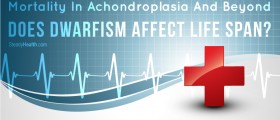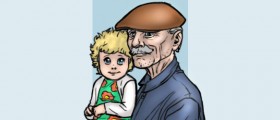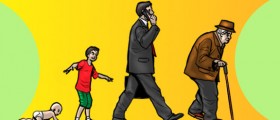
Being born in a world fitting those who are much taller than you can be quite hard and, at some points, more than unnerving and tiring. People who suffer from dwarfism face these problems each and every day, trying to do their best and live without problems or prejudice. Of course, this is almost impossible since we seem to be living in a world prone to ridicule and pathological competitiveness. Regardless, people suffering from all different kinds of dwarfism seem to manage living life just fine, or it may just look like it is so.
Facts about Dwarfism
Dwarfism is a rare condition manifesting through an individual having a much smaller body than what is considered to be standard, average human build. Moreover, certain types of dwarfism go hand-in-hand with specific deformations or lifelong health complications. In fact, dwarfism may evolve into paralysis, severe disabilities and even death in some cases. More than 2 million of people in the US are dwarfism sufferers.
Even though people usually connect dwarfism with family health history or genetics, this condition may affect children of people who have never had people suffering from dwarfism in their family.
Types of Dwarfism
Achondroplasia, being a specific type of a bone disorder, is one of the most common forms of dwarfism affecting people in the world. Usually, the parents of these people are of average build and chances of having a child suffering from achondroplasia are 1 in up to 40,000 people. The main characteristics of this form of dwarfism are small, short extremities found in a normally-sized body, along with hunched backs and abnormally large foreheads and heads in general. This condition is still considered incurable and, unfortunately, children from parents suffering from this condition rarely manage to live long enough to reach adulthood.
Achondrogenesis is yet another type of dwarfism, being less common than the previously mentioned one. This condition manifests through people having smaller arms, legs and trunk, with a large head, being extremely prominent. People suffering from this form of dwarfism usually die soon after they are born. A lifespan of people born with achondroplasia is very close to a lifespan expectancy of a person who isn't affected by dwarfism, however, in average they life approximately 10 years less than a person of a normal height.
Treatment for Dwarfism
Usually, when it is possible, surgical treatment makes sure that people with dwarfism endure this condition the best they can. Numerous surgeries are usually necessary for these people to overcome their deformities and many end up being incapable of walking without a wheelchair or crutches.
Nowadays, people are more tolerant towards people like those suffering from dwarfism. Yet, they still find it very hard to get accepted into “normal” social groups, find a proper job and live lives just like other people do. Nevertheless, people with dwarfism try very hard to fight against prejudice, doing their best to find their place under the sun.

















Your thoughts on this
Loading...